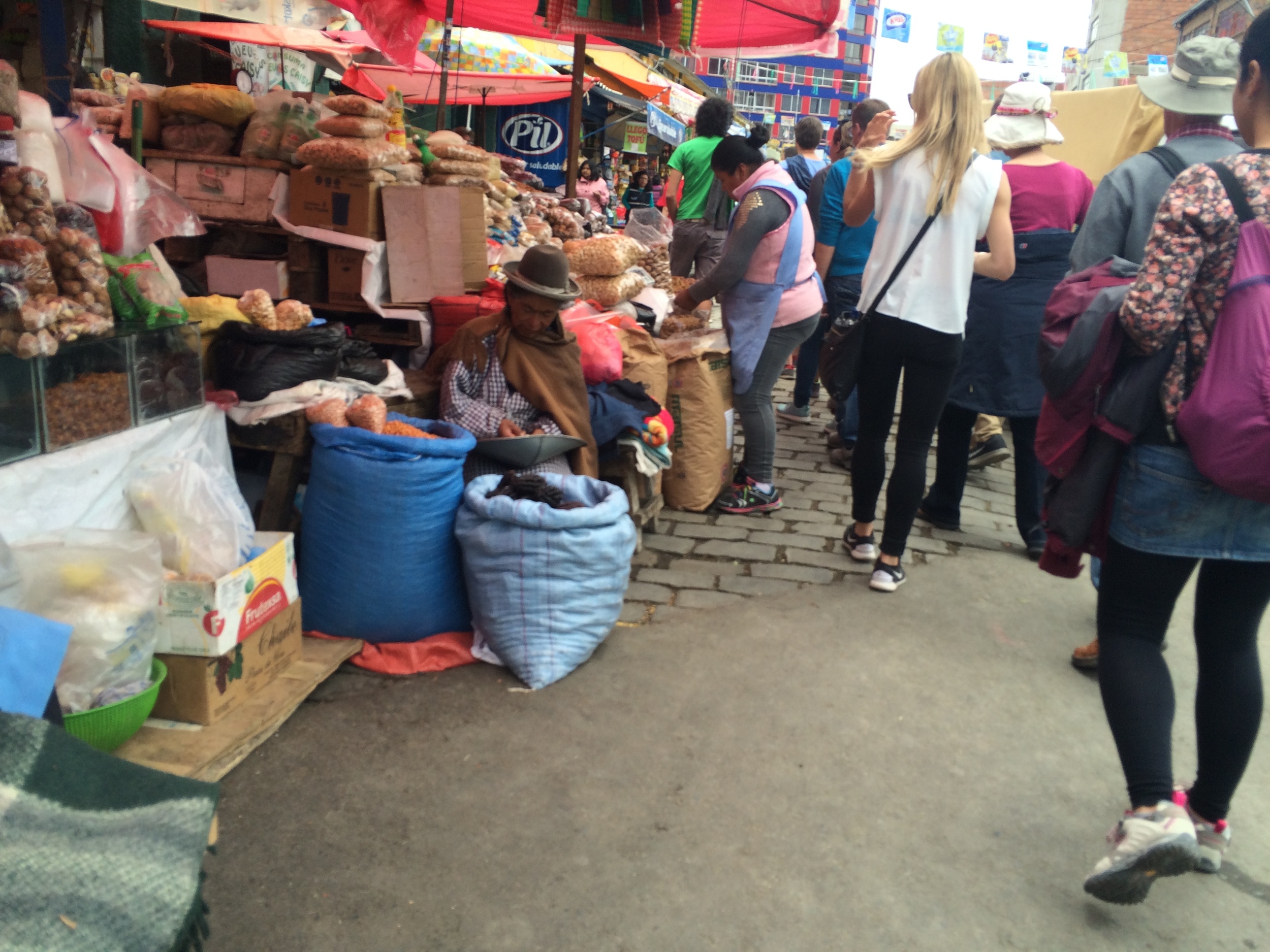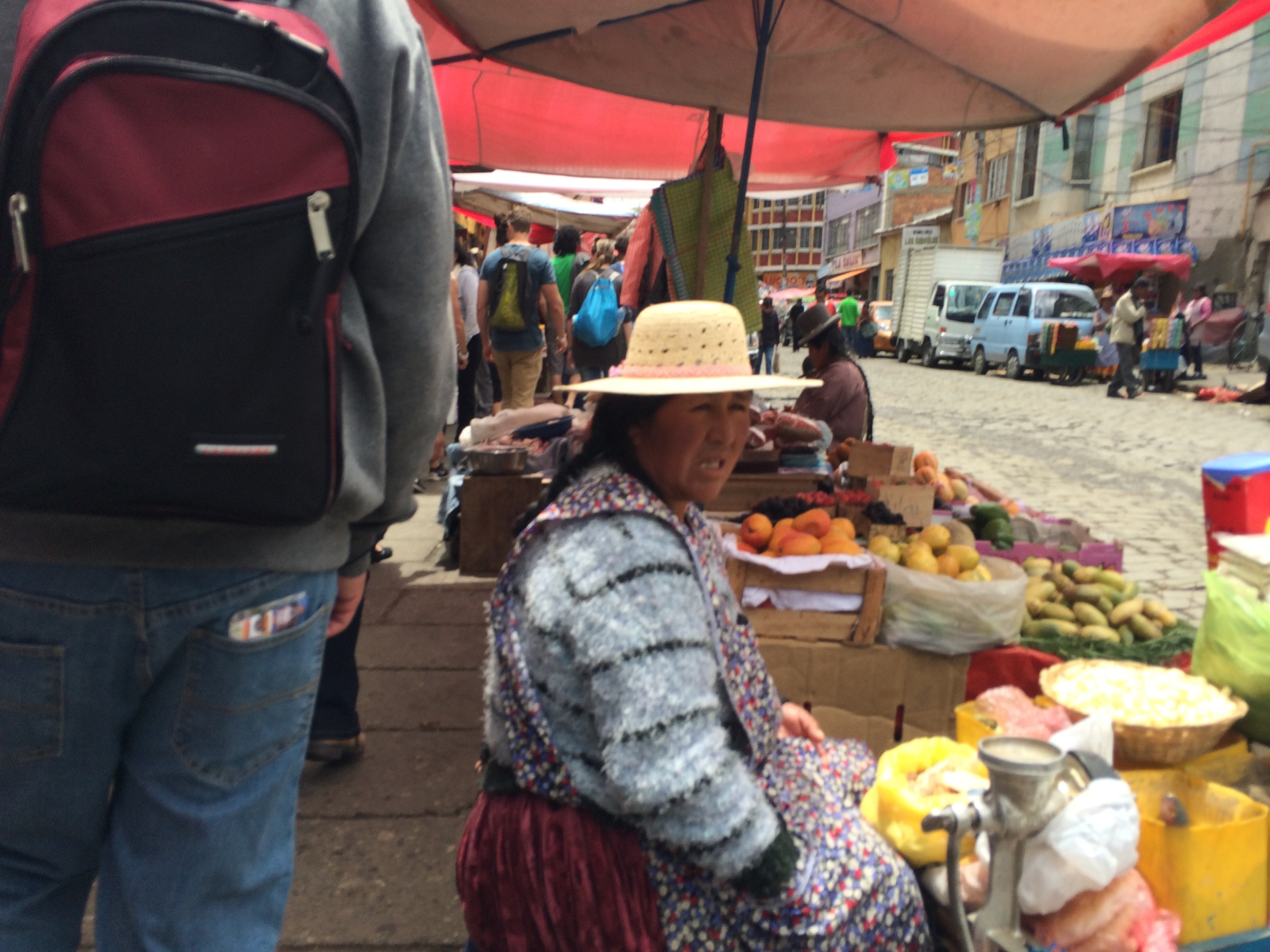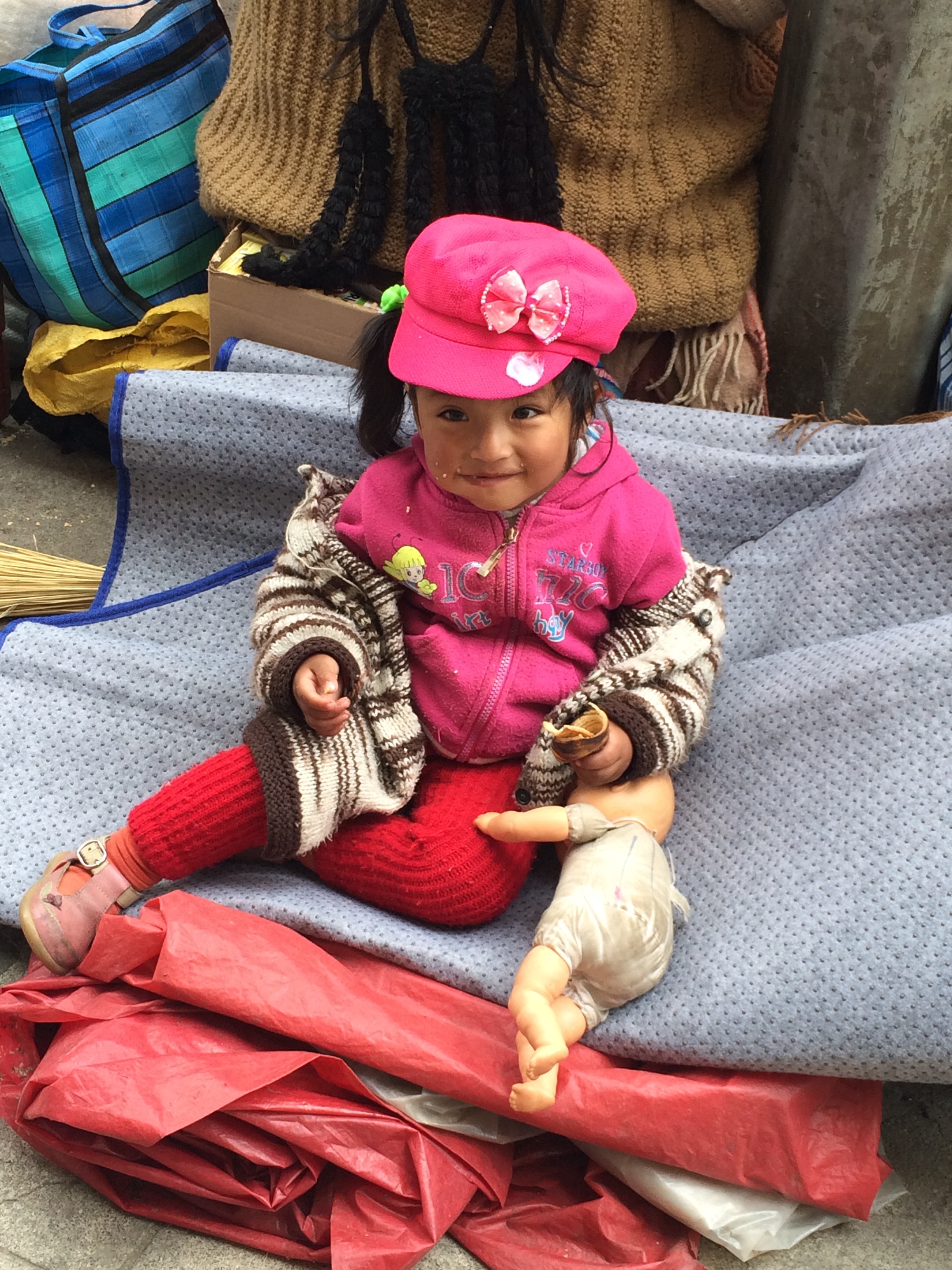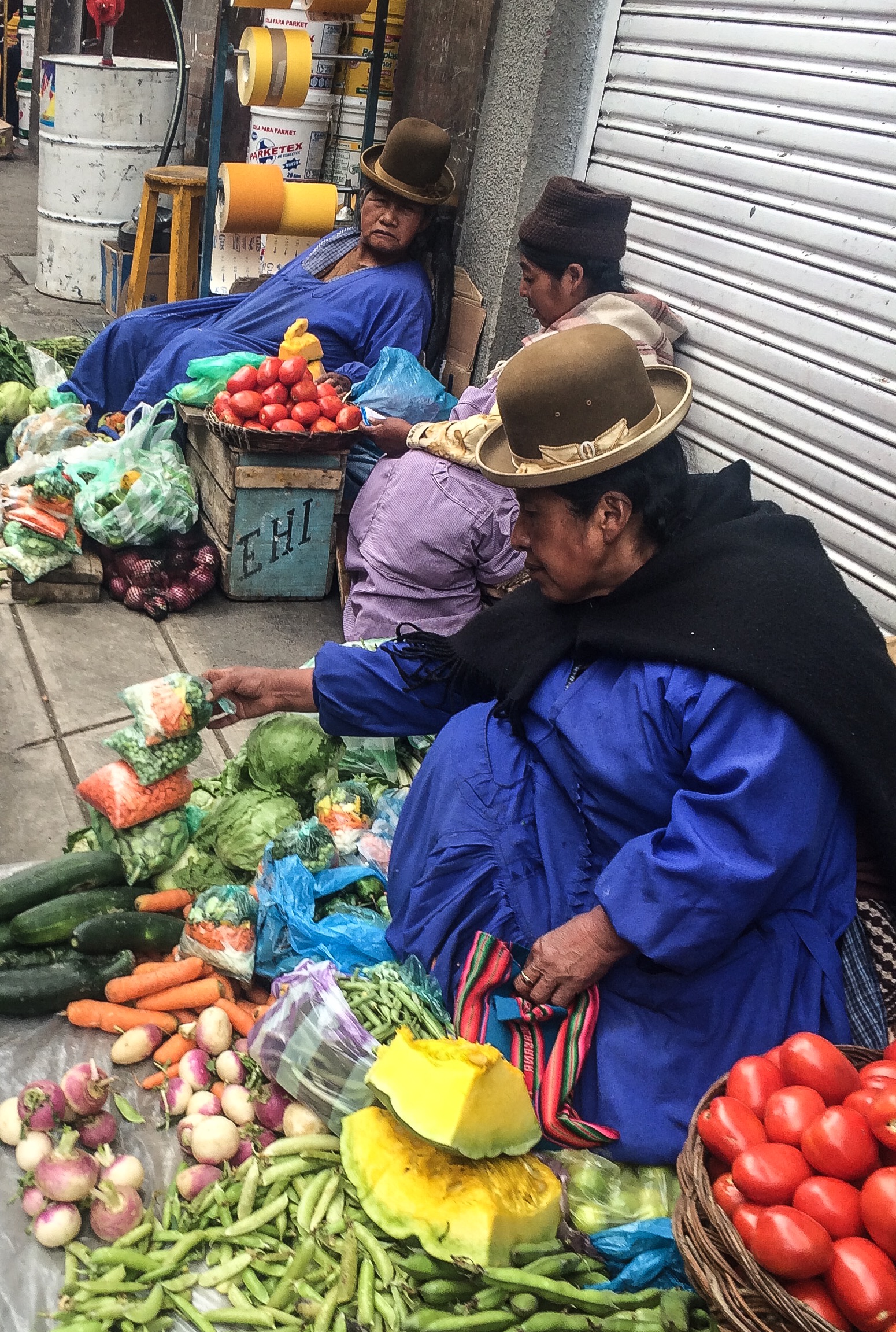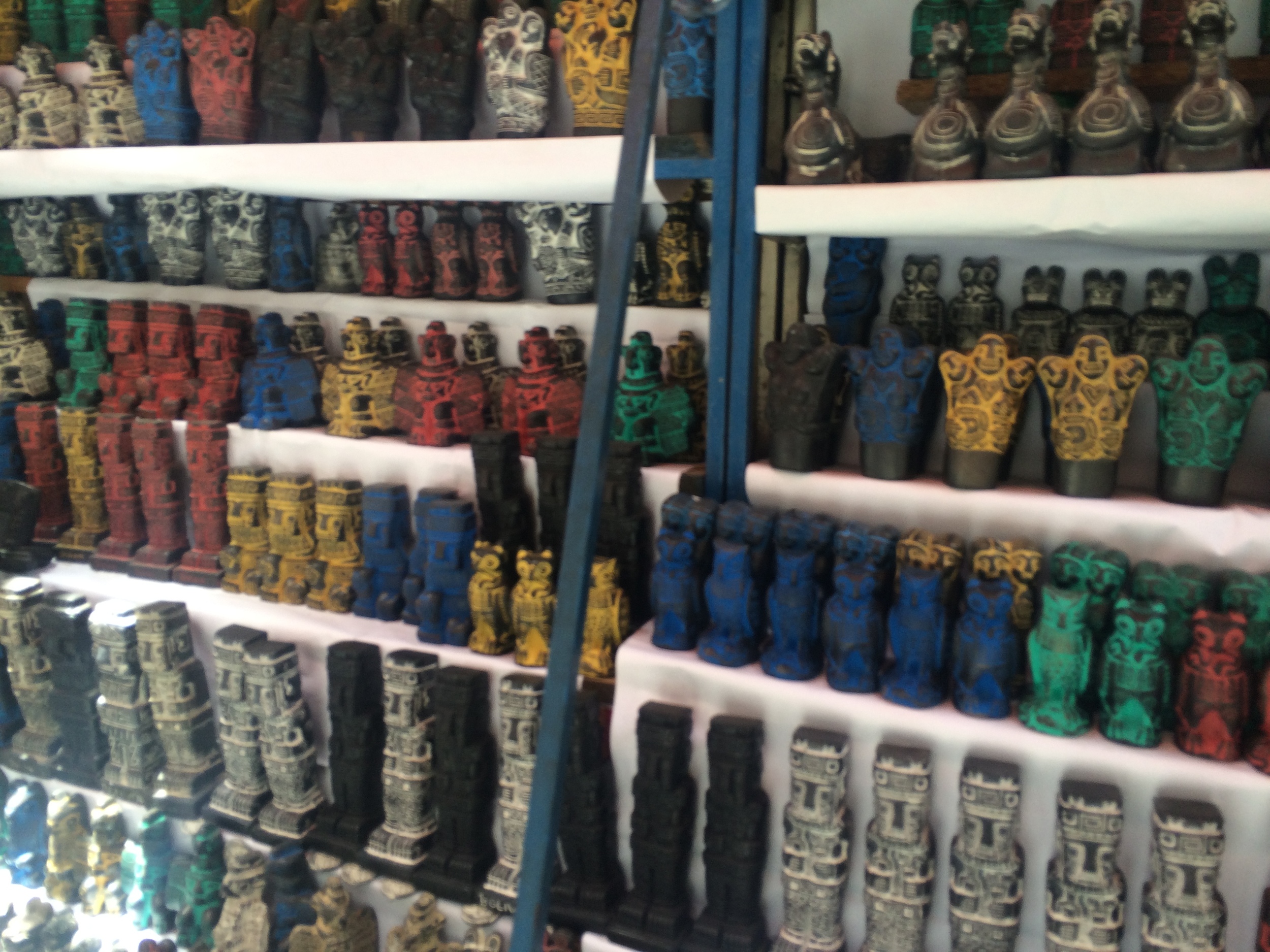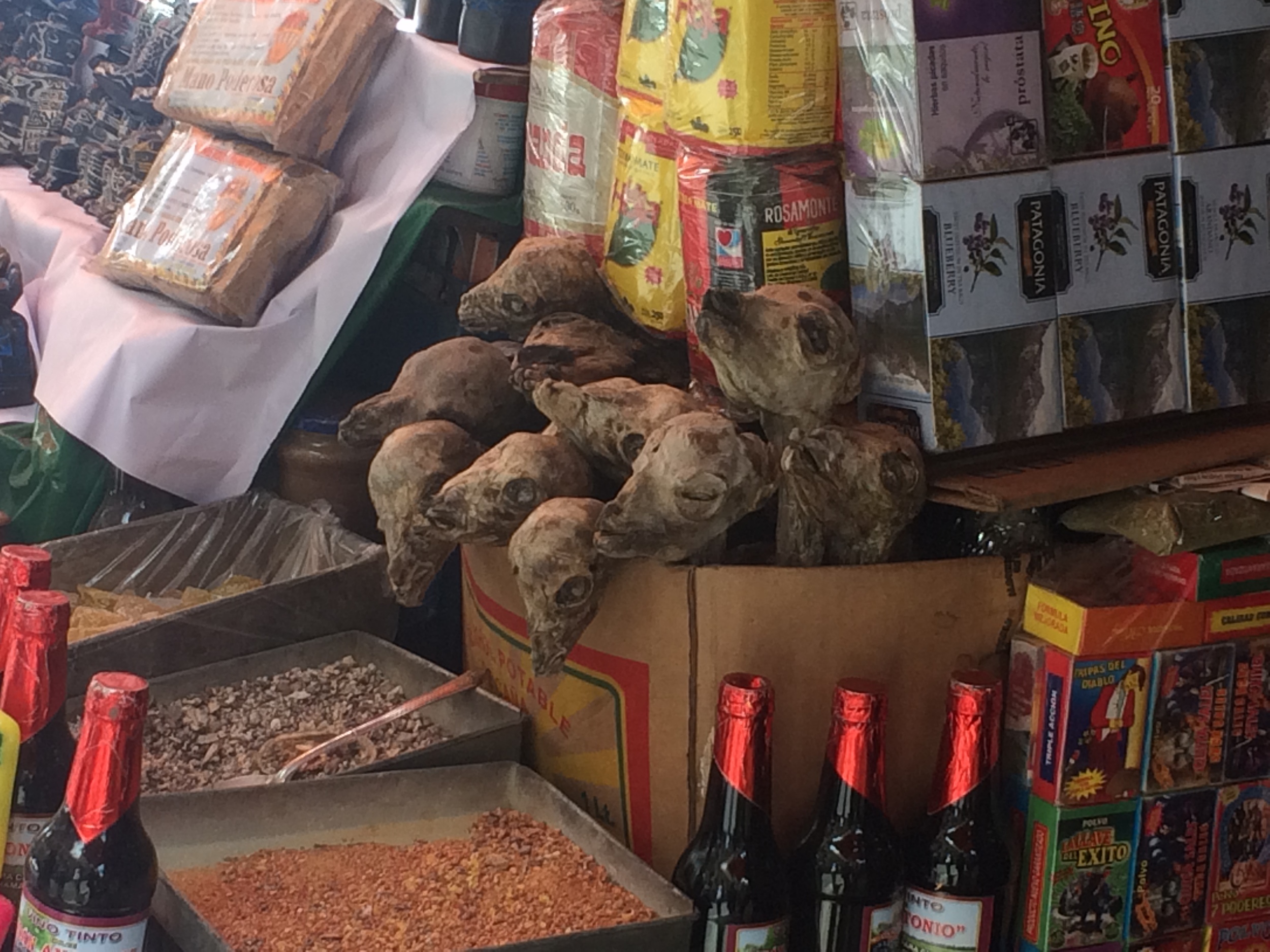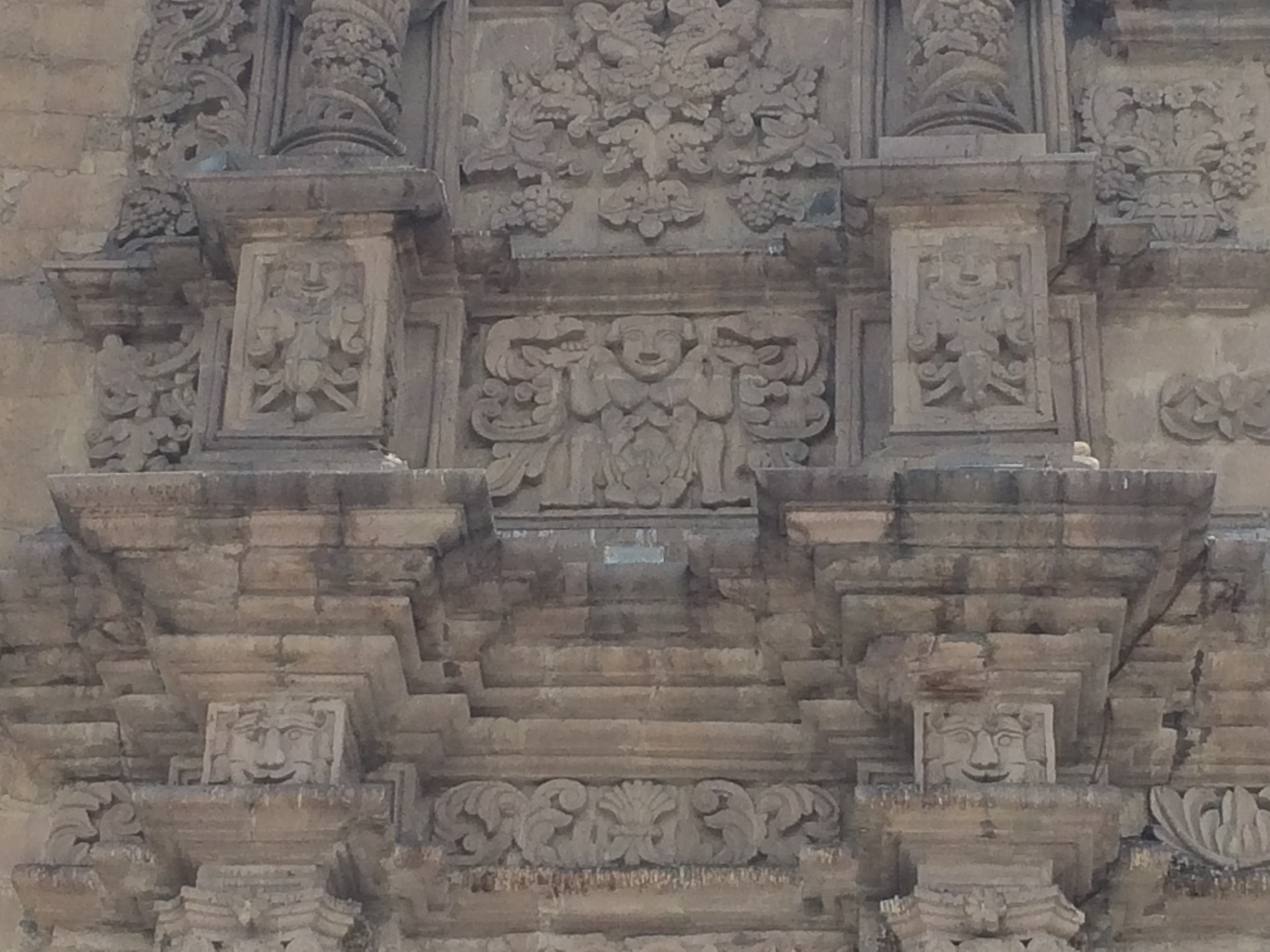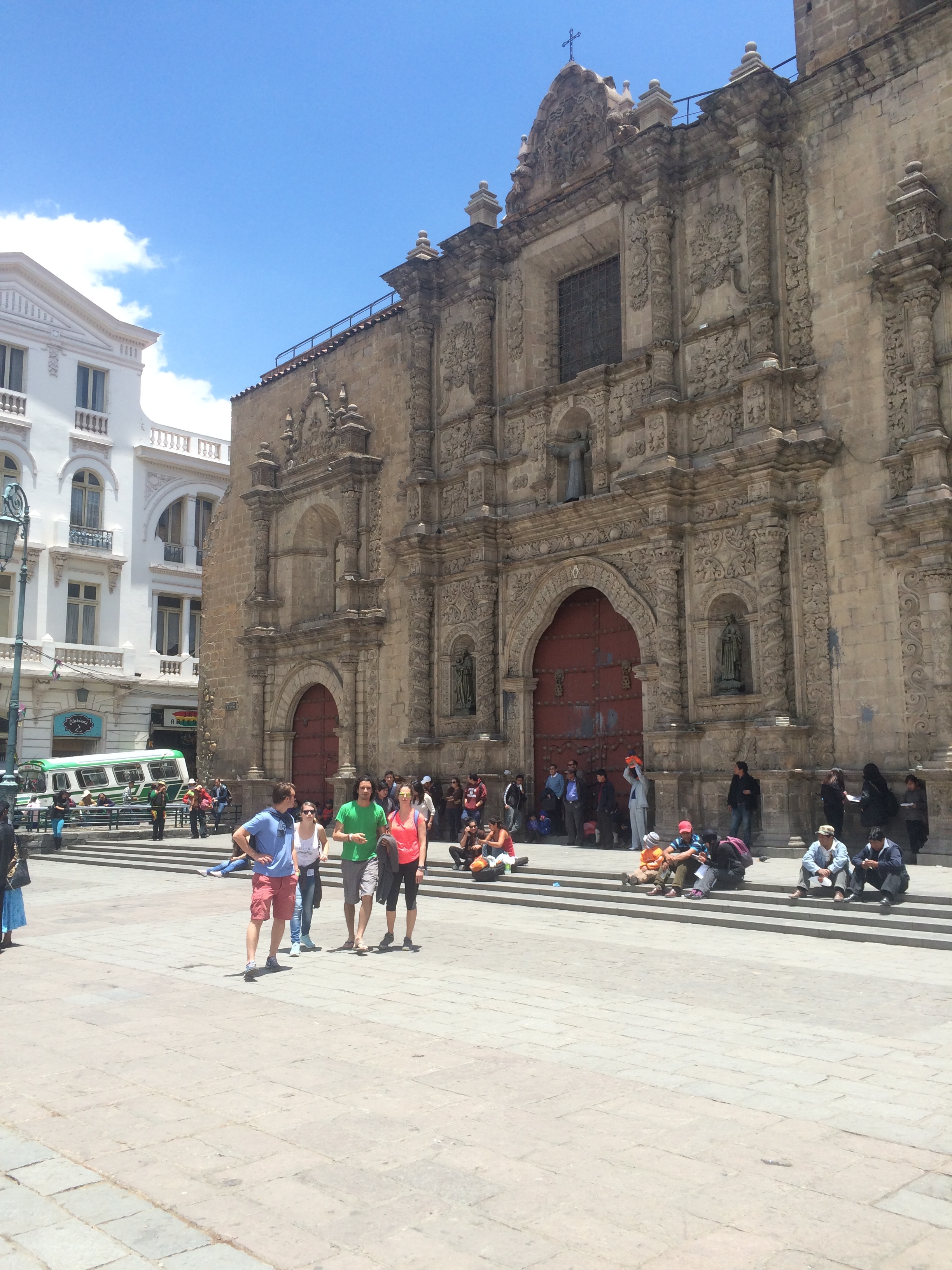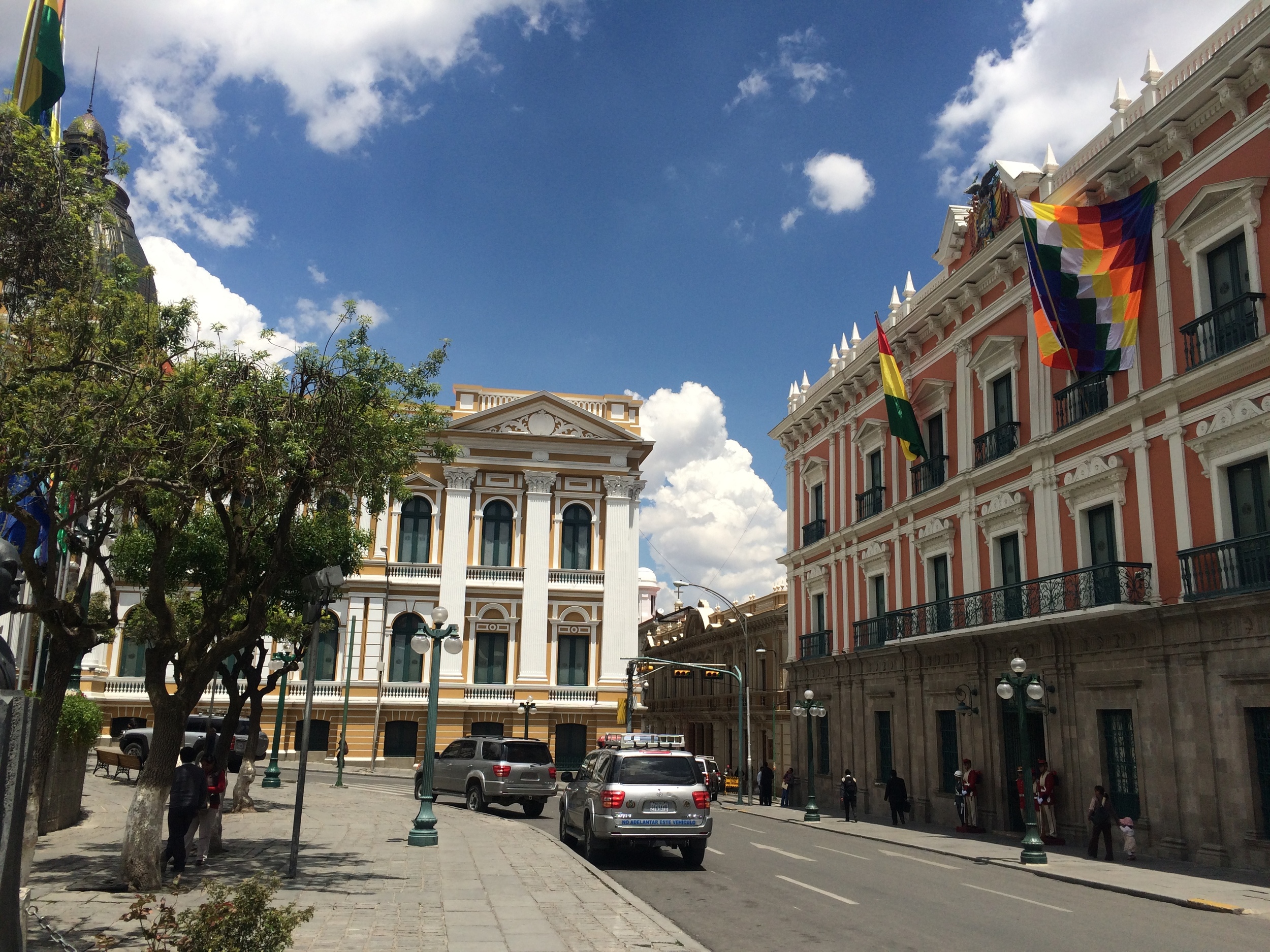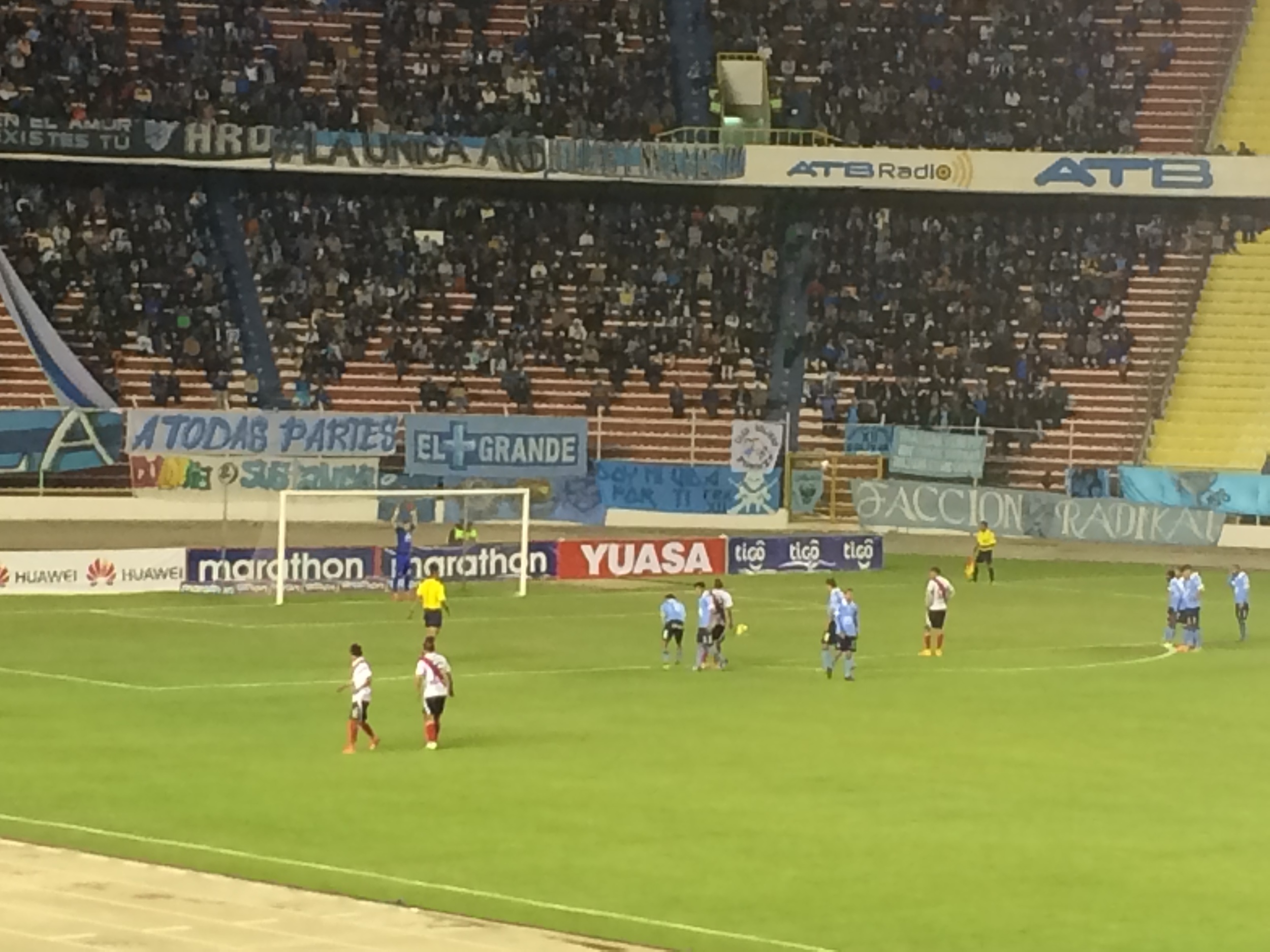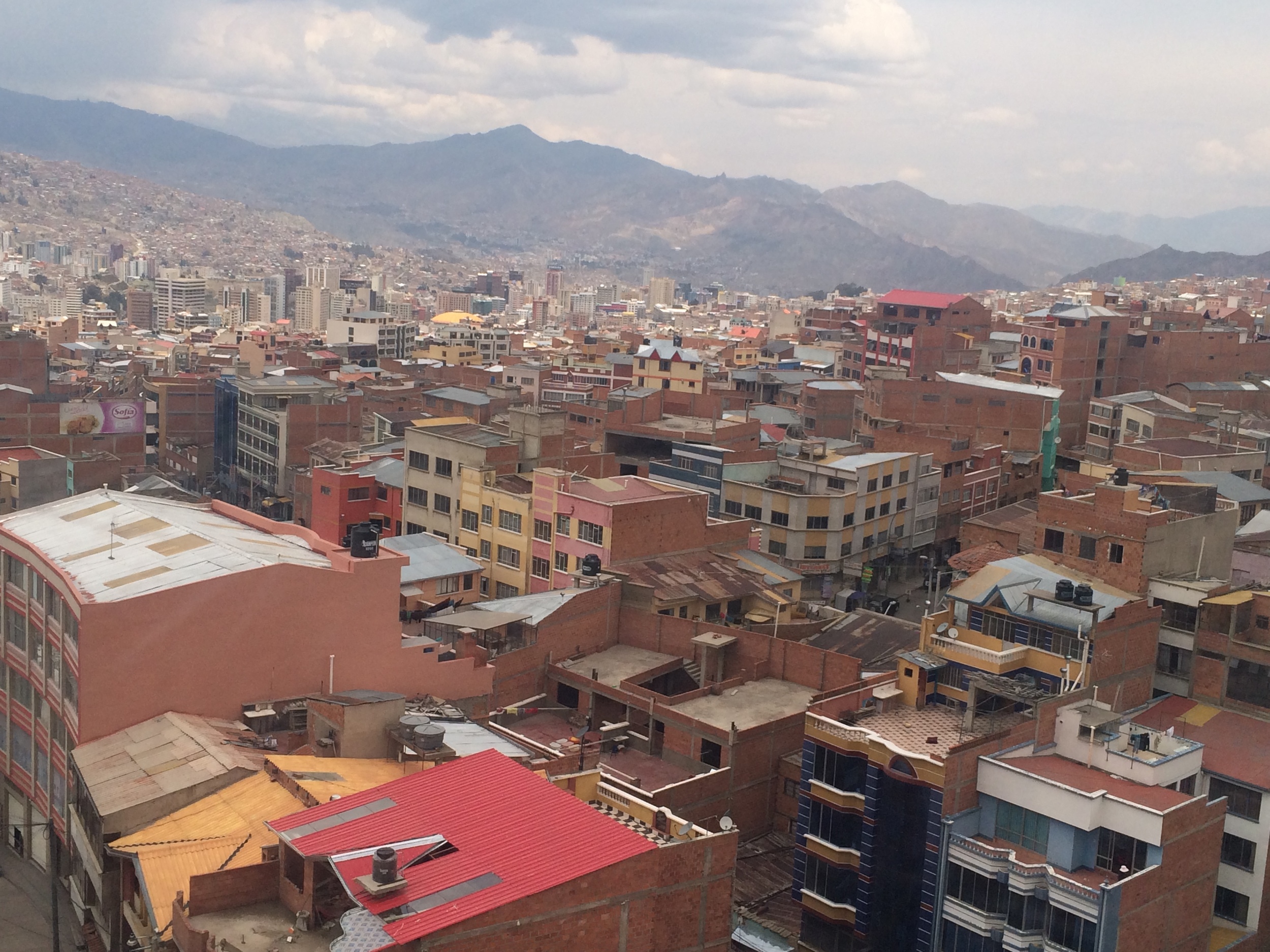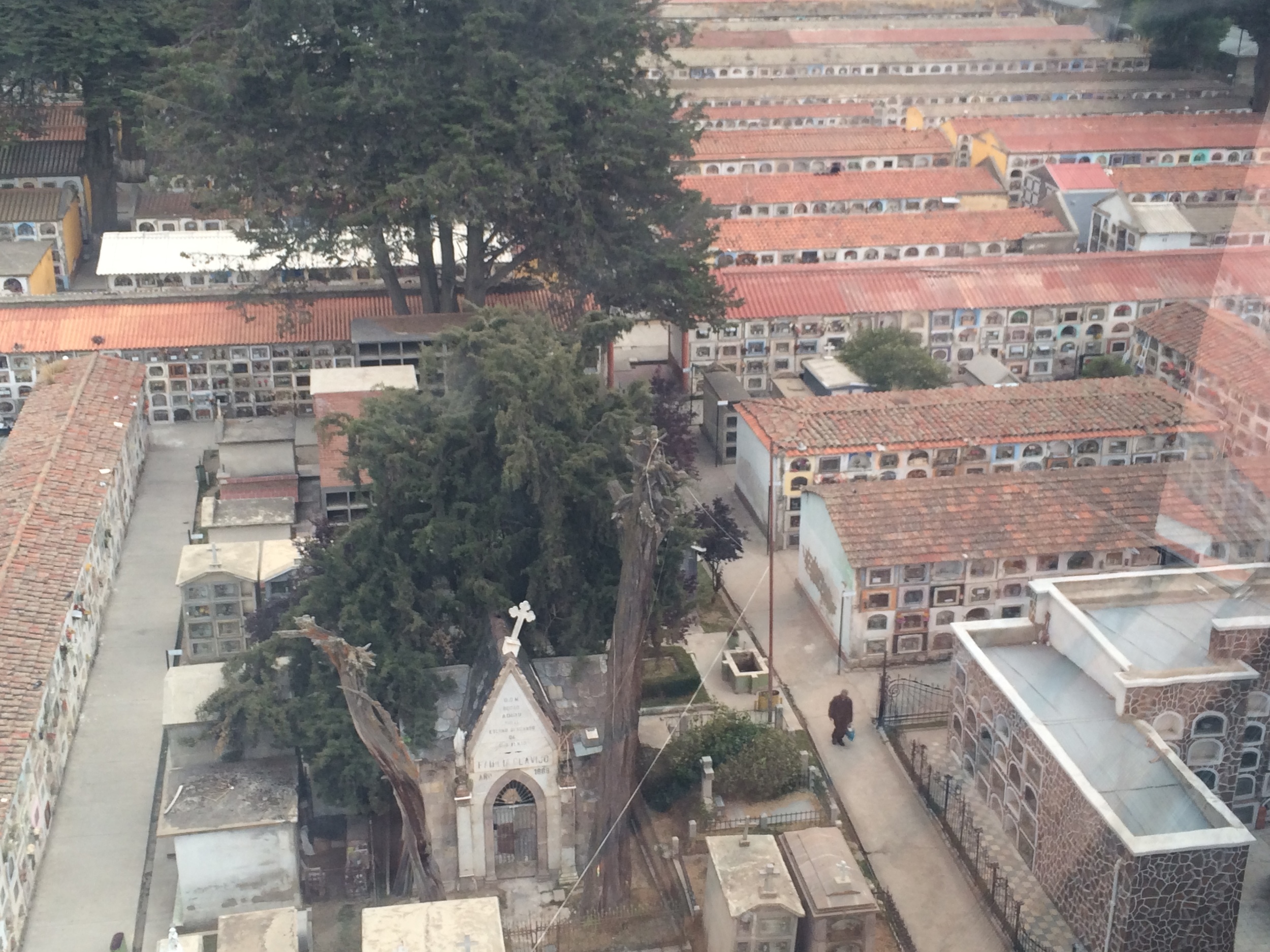La Paz- you fascinate me.
October 20th-24th, 2015
My two Canadian traveler friends (Nicole and Vivian) and I bussed from Copacabana to La Paz, taking ferries and winding mountain roads that rendered my friends carsick and, with the help of Gravol, asleep. The country between Copacabana and La Paz was desolate and worked by farmers. The buildings in the towns were only half built with rebar haphazardly reaching up, and empty window panes waiting for glass. The views were dusty and wanting, with ominous snow capped mountains encircling the upcoming La Paz.
La Paz is the most angry and fascinating city that I've encountered. It is the highest capital city in the world at, at 3,600 m asl. The customs, culture, and mind boggling markets kept my attention for four days, where I was supposed to stay for only two.
I stayed in a party hostel, which was obviously a lot of fun and full of party-hostel style debauchery. The first night was full of drinking games and soaking up shiny travel vibes. The next day we did a walking tour (http://www.redcapwalkingtours.com). The tour began by San Pedro Prison, which has (in my ignorant opinion on such matters) amongst the most unique societal constructs . The inmates of the prison have to pay rent or buy accommodation, and are either business owners or employees in the jail, responsible for making their own way. They are even allowed to bring their families into the prison, as in there are husbands, wives, and children within the jailed community. The non-prisoners (children, for example) are of course not required to stay in the prison. One of the main sources of income of the jail is cocaine. The jail is apparently stocked with laboratories and trafficked outside, often through the use of dirty diapers, which are simply thrown over the walls of the prison. They also make money off of brewing Coca-Cola. There are also lots of regular jobs that are needed in many societies, such as hairdressing, shop keeping, messengers etc. Tours through the jail are now illegal because of past violent crimes, but apparently it is possible if you bribe the guards. And don't worry guys, I didn't try to go on a jail tour. Instead, I'm planning on reading the book titled Marching Powder, about a backpacking Australian journalist who lived within the prison documenting one of the inmates. When you can't do it, read about it.
After the fascinating and frightening tales of San Pedro Prison, we were lead to the sprawling fruit and vegetable markets. We were warned against taking pictures of the Cholitas selling their goods without their permission, as they often opted to throw rotten vegetables and the perpetrators. And really, who could blame them? I wouldn't want a group of gringos coming through my market every day at 2:00 PM taking pictures of me. One of the Cholitas even said, in Spanish of course, "They come the same time every day", whilst rolling her eyes.
Cholitas are indigenous women who are a driving force behind Bolivia's culture and economy. Once heavily discriminated against, they are now the pillars of La Paz. According to my tour guide, everyone has a Cholita in the markets that they go to for fruit, vegetables, and psychotherapy (basically). You tell your Cholita everything, and remain faithful to the Cholita, who often tops you up with extra produce, as well as motherly advice about whatever issue you may be facing. Cholitas traditionally have skirts with petticoats, a shawl, two long braids down her back, and a magically balanced bowler's hat. BBC wrote an interesting article about Cholitas, (http://www.bbc.com /news/magazine-26172313) describing their rise, and also their fashion influences.
Among the sprawling markets in La Paz is the mercado de bruja, or the witches' market. The strangest thing about the witches' market is the lama fetuses lining the stalls. Lama fetuses are buried at the foundation of new buildings or businesses as an offering to pacha mama (mother earth). There are also a large amount of widely used love potions and aphrodisiacs, and folk medicines sold at these markets. We were warned that if you take pictures of the witches without asking them first, that they might curse you. Nicole got yelled at for lingering around in awe of the lama fetuses, but not cursed (thank goodness). Here is a good blog post with more info on the witches' market (http://www.sacred-destinations.com/bolivia/la-paz-witches-market).
Lama fetuses- used as sacrifices to Pachamama
The next day, I saw my first real soccer game. There was a big group of people that went from the hostel. I was mostly impressed because the players could run across an entire soccer field l at almost 4000 m asl. I couldn't walk up the hill without losing my breath. The home team won 6:3. The game was actually beautiful, and full of stereotypical football drama, with exaggerated falling and passionate finger pointing. Alcohol is banned from the stadium, and half of the people who were with us snuck in bottles of wine and mickeys of whiskey. Though they were drinking discretely, another spectator told on us, and the police quietly came and confiscated all of their wine. Everyone was looking at us saying "stupid gringos". I also had a delicious hamburger that made me so sick later that night that I thought I was dying.
I drank my first good coffee that I had in a month and a half in Bolivia, since there isn't a coffee culture in many South American countries. The owner was a Toronto/La Paz boy who is aiming to ignite a coffee culture in Bolivia, since the country really does have some of the best coffee in the world. The cafe is called Antigua Miami, equipped with a espresso machine that comes all the way from Canada.
Birthday celebrations with Vivian and Nicole at fancy restaurants, drinking coffee, wondering markets, riding gondolas, learning Bolivian politics; I loved this crazy city.









